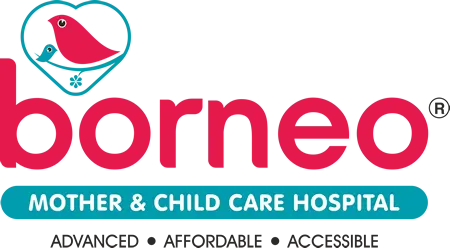What Is High-Frequency Oscillatory Ventilation HFOV In Neonates And How Does It Work?
High-Frequency Oscillatory Ventilation (HFOV) is a form of respiratory support for neonates and newborns. It is used in cases where conventional mechanical ventilation does not provide adequate respiratory support. HFOV works by delivering small amounts of air at high frequencies to the lungs, which helps to improve oxygenation and reduce the risk of complications associated with mechanical ventilation. HFOV can be used in both preterm and term infants, as well as pediatric patients who require respiratory support. It has been shown to be effective in improving oxygenation, reducing the need for intubation, and decreasing the duration of hospitalization.
Current Evidence on the Benefits of High-Frequency Oscillatory Ventilation (HFOV) for Neonates-
High-Frequency Oscillatory Ventilation (HFOV) is a type of mechanical ventilation therapy used to treat infants with respiratory distress syndrome. It has been found to be beneficial in improving the condition of neonates with severe respiratory distress. HFOV therapy has become an important part of neonatal ventilation strategies, as it can reduce the need for other forms of mechanical ventilation and improve patient outcomes.
The current evidence on the benefits of HFOV therapy suggests that it is a safe and effective way to provide ventilatory support for infants with severe respiratory distress. Studies have shown that HFOV can improve oxygenation, reduce the duration of mechanical ventilation, and reduce mortality rates in infants with RDS. In addition, HFOV may also help to reduce airway injury caused by other forms of mechanical ventilation.
HFOV of neonates in India-
High-frequency oscillatory ventilation (HFOV) is a type of advanced respiratory support used to treat neonates in India. It is used in cases of severe respiratory distress syndrome (RDS) and other conditions where conventional ventilation methods are not sufficient. HFOV has become increasingly popular in India due to its safety, efficacy, and cost-effectiveness.
HFOV works by delivering small, frequent breaths at high frequency, which helps to reduce the risk of lung injury and improve oxygenation. It also helps to reduce work of breathing and the need for sedation or muscle relaxants. HFOV has been shown to be effective in improving clinical outcomes in neonates with RDS and other conditions requiring respiratory support.
The Benefits of Using HFOV in Neonatal Respiratory Care-
High Frequency Oscillatory Ventilation (HFOV) has been used as a form of lung protective ventilation in neonatal respiratory care since the early 1990s. HFOV is a form of mechanical ventilation that uses pressure oscillations at high frequencies to deliver oxygen to the lungs. It is an effective way to improve oxygenation and reduce the risk of complications associated with mechanical ventilation. This form of ventilation is beneficial to the patient because it provides lung protective ventilation and cardiovascular stability. HFOV is an excellent choice for treating patients with acute or chronic respiratory failure, as well as those who are at risk of developing respiratory distress syndrome.
The benefits of using HFOV in neonatal respiratory care include improved oxygenation, reduced barotrauma, and improved cardiovascular stability. It also helps maintain adequate alveolar recruitment and prevents air trapping, which can lead to further lung injury. HFOV is also beneficial for patients with underlying cardiovascular instability due to its ability to provide support while allowing for minimal changes in intrathoracic pressure.
Reduce the risk of barotrauma by HFOV-
High-Frequency Oscillatory Ventilation (HFOV) is a form of mechanical ventilation used to reduce the risk of barotrauma in critically ill patients. HFOV works by delivering small amounts of air at high frequency, which allows for more precise control over the pressure delivered to the airways.
This helps reduce the risk of barotrauma, which is a type of lung injury caused by excessive pressure in the lungs. HFOV has been found to be effective in reducing the risk of barotrauma, and has been used successfully in treating a variety of respiratory conditions. It can also be used as an alternative to conventional ventilation techniques when conventional techniques are not suitable or are contraindicated.
Potential Risks Associated with Using High-Frequency Oscillatory Ventilation (HFOV) for Neonates-
High-Frequency Oscillatory Ventilation (HFOV) is a form of ventilation used to treat neonates with respiratory distress. While it has shown promising results in treating neonatal patients, there are some potential risks associated with the use of HFOV.
Oxygen toxicity is one of the risks of HFOV that occurs when the oxygen concentration in the patient’s blood is too high for an extended period of time. Air leaks can occur when air escapes from the lungs due to a break in the seal between the endotracheal tube and the trachea or bronchus.
Long-term pulmonary damage by HFOV-
Long-term pulmonary damage is a serious risk for premature infants who require mechanical ventilation to survive. High-Frequency Oscillatory Ventilation (HFOV) is one of the most commonly used forms of mechanical ventilation, but it can cause long-term pulmonary damage if used for too long.
Bronchopulmonary dysplasia (BPD) is the most common form of long-term pulmonary damage caused by HFOV, and other risks include chronic lung disease, airway remodeling, and impaired alveolar development. It is important to monitor infants closely while they are receiving HFOV in order to minimize any potential long-term pulmonary damage.
How to Maximize the Benefits of Using High-Frequency Oscillatory Ventilation (HFOV) for Neonates?
High-Frequency Oscillatory Ventilation (HFOV) is a form of mechanical ventilation used for neonates with severe respiratory distress. It has been found to be an effective treatment for newborns suffering from acute lung injury, as it provides more efficient delivery of oxygen to the lungs and helps maintain normal lung function. However, in order to maximize the benefits of using HFOV, there are certain considerations that need to be taken into account.
This includes proper monitoring of the patient’s condition, ensuring proper positioning and settings on the ventilator, and understanding how to best adjust the settings in order to provide optimal care. By following these guidelines, healthcare providers can ensure that they are providing their neonatal patients with the best possible care while minimizing any potential risks associated with HFOV use.


